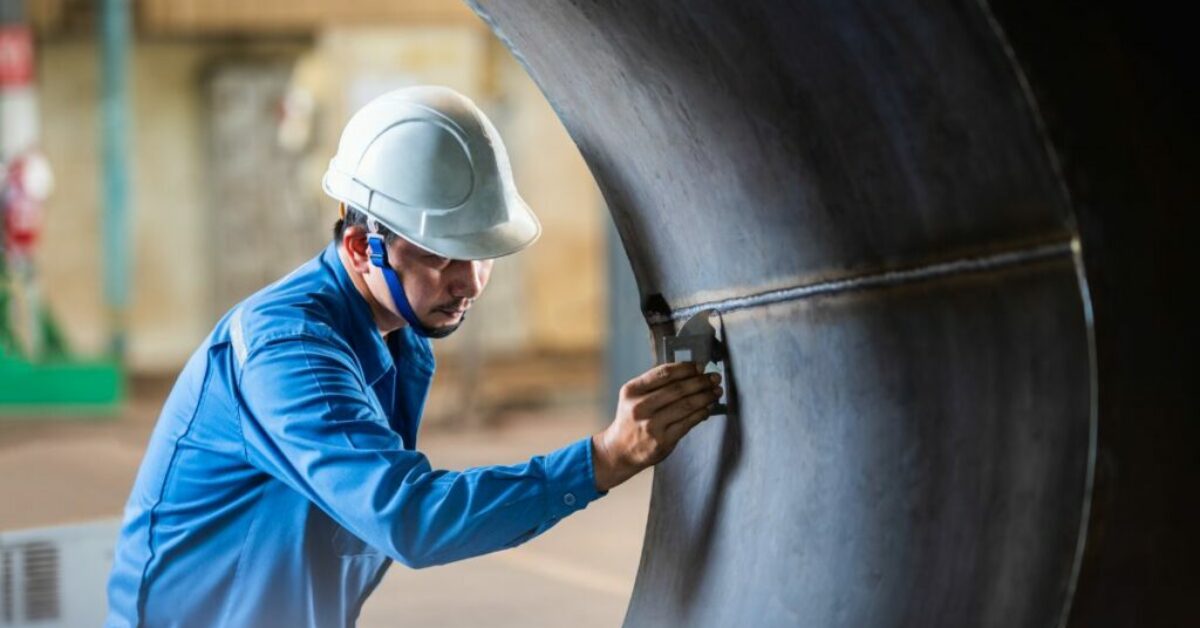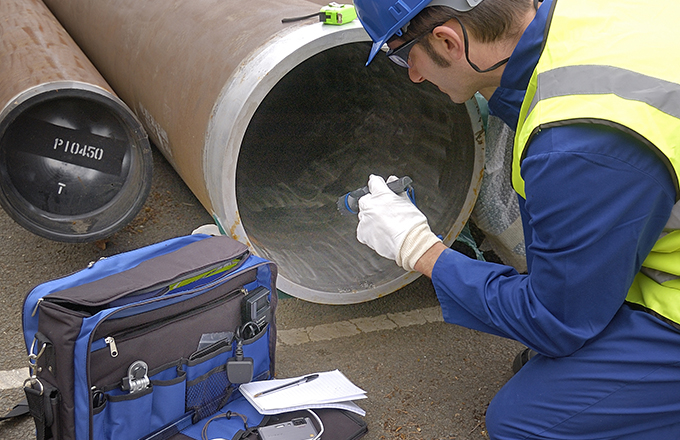Browsing Welding Inspection Gilbert Arizona: Essential Insights for Market Professionals
Browsing Welding Inspection Gilbert Arizona: Essential Insights for Market Professionals
Blog Article
Discovering the Importance of Welding Assessment in Industrial Applications: Guarding Against Failings and Enhancing Durability
Welding examination offers as a critical line of protection in commercial applications, making sure the structural stability and reliability of welded parts. By methodically determining problems such as porosity and insufficient blend, examinations not just stop failures yet additionally extend the life-span of crucial properties.
Function of Welding Inspection
Welding examination offers as a critical guard in industrial applications, ensuring that bonded structures meet specified criteria of high quality and safety. This procedure includes a systematic examination of welds to validate their integrity, toughness, and compliance with established codes and requirements. The duty of welding examination is complex, incorporating both aesthetic assessments and non-destructive testing methods, which might include ultrasonic, radiographic, or magnetic bit testing.

Additionally, welding examination plays an essential role in regulative conformity. Several markets are governed by rigid safety requirements, demanding thorough paperwork and recognition of welding practices. By maintaining these records, companies can show adherence to security laws, thereby promoting depend on amongst stakeholders and clients. Inevitably, the role of welding evaluation is crucial in promoting safety, enhancing performance, and shielding investments in industrial facilities.
Typical Welding Problems

Among the most widespread problems is porosity, defined by little gas pockets caught within the weld metal. This occurs as a result of contaminants or incorrect shielding gas, compromising the weld's stamina. An additional considerable issue is incomplete combination, where the weld steel stops working to bond correctly with the base material, possibly causing structural weaknesses.
Cracks can likewise establish throughout or after the welding process, typically attributed to thermal stress and anxieties or incorrect cooling prices. Furthermore, undercutting, where the base steel is eroded along the weld bead, can deteriorate the joint and is typically caused by too much warm input or incorrect strategy.
In addition, lack of infiltration happens when the weld steel does not reach the origin of the joint, bring about insufficient toughness. Recognizing these common flaws is essential for welders and assessors alike to ensure that bonded frameworks meet safety and security and performance criteria, inevitably preventing prospective failings in industrial applications.
Benefits of Routine Examinations
Regular examinations serve as a critical protect in making sure the integrity and longevity of welded structures. These analyses determine prospective issues and weak points that may jeopardize the honesty of welds, permitting timely remediation before concerns intensify. By carrying out an organized examination regimen, organizations can dramatically minimize the threat of catastrophic failures that may result in expensive downtime, devices replacement, and even mishaps.
Additionally, routine examinations add to boosted quality assurance throughout the welding process. By adhering to a constant evaluation routine, business can make sure that their welding methods satisfy recognized high quality benchmarks and finest methods. This not only promotes a society of accountability yet additionally urges constant enhancement among welding employees.
On top of that, regular examinations assist in better maintenance preparation. By recognizing deterioration early, organizations can purposefully arrange replacements and repairs, decreasing interruption to operations. This positive approach inevitably results in prolonged asset life expectancy and improved general productivity.
Finally, a click this dedication to routine inspections can boost a company's online reputation in the industry. Customers and stakeholders progressively worth organizations that focus on safety and top quality, thereby improving trust fund and potentially bring about boosted business chances.
Sector Criteria and Laws
Sticking to industry requirements and regulations is an essential aspect of welding examination that complements the benefits of routine examinations. These requirements, established by organizations such as the American Welding Culture (AWS) and the American Culture of Mechanical Designers (ASME), provide a framework for finest methods in welding procedures, materials, and examination techniques. Compliance with these policies makes sure that welds fulfill the required quality and security criteria, dramatically decreasing the risk of structural failures.
Governing bodies like the Occupational Safety and Health Administration (OSHA) even more impose standards that secure employees and the setting throughout welding operations. By following these established standards, industries can boost the reliability of their elements and frameworks, ensuring they carry out as planned under numerous operational conditions.
Moreover, adherence to industry criteria cultivates uniformity in high quality control, assisting in smoother interaction amongst stakeholders and governing companies. This alignment not only decreases responsibility dangers however likewise improves the reputation of companies in open markets. Ultimately, conformity with welding requirements and regulations is not merely a legal obligation; it is a vital investment in security, efficiency, and long-lasting operational success.
Future Trends in Welding Examination
As markets continue to advance, click resources the future of welding assessment is poised to incorporate sophisticated technologies that boost accuracy and performance. One of one of the most considerable trends is the adoption of automation and robotics in examination procedures. Automated systems can conduct examinations quickly, reducing human error and increasing throughput in making environments.
In addition, the integration of fabricated intelligence (AI) and artificial intelligence algorithms will make it possible for predictive analytics, enabling real-time assessments and positive upkeep (Welding Inspection Gilbert Arizona). By examining data from previous evaluations, these modern technologies can identify patterns that might show potential failures, consequently extending the life expectancy of bonded parts

Additionally, the fad in the direction of digitalization will result in enhanced information monitoring systems that promote better monitoring, reporting, and conformity with sector standards. In summary, the future of welding evaluation is defined by technological improvements that assure to considerably enhance dependability, security, and functional effectiveness in different industrial applications.
Final Thought
To conclude, welding inspection serves a vital function in ensuring the integrity and resilience of welded frameworks throughout different industrial applications. By determining flaws such as porosity and incomplete fusion, regular inspections play a significant duty in danger mitigation and quality control. Adherence to industry standards and laws better improves functional safety and reliability. As innovations in innovation continue to evolve, the future of welding examination assures enhanced accuracy and efficiency, ultimately adding to the durability of vital infrastructures.
Welding evaluation offers as an important line of defense in industrial applications, making certain the structural honesty and dependability of bonded components.Welding assessment serves as a vital guard in industrial applications, making sure that bonded structures fulfill specified requirements of top quality and safety - Welding Inspection Gilbert Arizona. Eventually, the duty of welding inspection is indispensable in promoting safety, boosting efficiency, and protecting investments in commercial framework
These requirements, established by companies such as the American Welding Culture (AWS) and the American Culture of Mechanical Designers (ASME), provide a framework for finest techniques in welding processes, materials, and evaluation methods.In read more final thought, welding examination offers an essential function in ensuring the stability and durability of welded structures throughout various commercial applications.
Report this page